
The Sundhnúkur eruptions in Iceland’s Reykjanes Peninsula have caused mass evacuations, including at the well-known Blue Lagoon spa, after lava flooded the streets, releasing toxic gases that threaten humans and wildlife alike.
The eruption, which started on April 1st, 2025, is the eighth recorded event since December 2023 and has caused significant disruption throughout the Icelandic town. In addition to the damage to local infrastructure and human displacement, the environmental cost is also a pressing concern.
Iceland’s unique wildlife, from seabirds to freshwater ecosystems, faces unprecedented threats from ash fall, ground subsidence, and sulfur dioxide emission. Scientists believe that this volcanic activity may last for decades, with long-term biodiversity threats and effects. Here, we discuss the eruption’s effects on wildlife, emphasizing the need for conservation action amidst this geological crisis.
The Eruption Unfolds
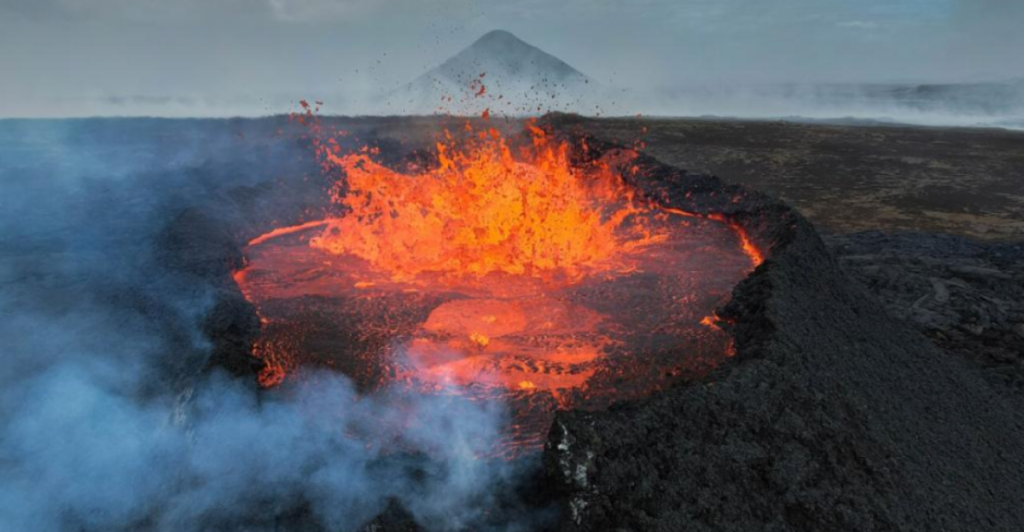
Sundhnúkur eruptions began in December 2023 with dramatic fissures spewing lava and ash on the Reykjanes Peninsula. Scientists attribute these eruptions to magmatic intrusions under Svartsengi, a volcanic system north of Grindavik.
As a result, the town was heavily damaged by ground subsidence (sinking of the Earth’s surface) and the creation of a graben valley, which eventually triggered mass evacuations. The Blue Lagoon spa evacuation is an indicator of the town’s dangerous proximity to Iceland’s natural wonders.
While human safety dominates the headlines, the eruptions also affected the region’s ecosystems. Toxic gases, such as sulfur dioxide, increased ten times more than in previous eruptions, negatively affecting the air quality. Further, the flowing lava reshaped habitats, disrupting animal nesting colonies and plant life.
Immediate Human Impact

Grindavík, a fishing village with 3,800 residents, has a history of evacuations due to past eruptions. Prior to this evacuation, many locals were already living in temporary housing after the 2023 and 2024 eruptions. However, the recent eruption necessitated further evacuations, with most individuals fleeing the area while others chose to remain.
With no reported casualties, many will face psychological challenges due to interrupted routines, unstable economies, and anxieties of permanent dislocation. While shelters offered food, updates, and mental health care, Iceland’s Civil Protection Agency sent out emergency personnel and thermal drones to evaluate structural damage.
The Blue Lagoon Spa, a tourist attraction with over 700,000 visitors annually, successfully evacuated all its clients and workers and temporarily suspended its operations. Officials issued warnings of an imminent full-scale eruption due to widespread magma accumulation.
Wildlife Under Threat
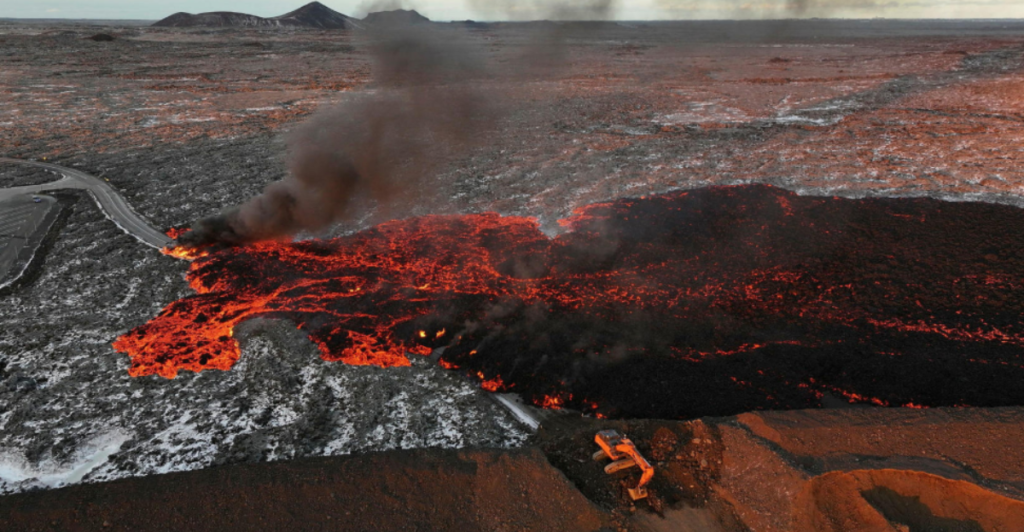
Reykjanes Peninsula has a rich biodiversity with wildlife such as seabird breeding colonies, marine mammals, and thermophilic geothermal microorganisms. Volcanic eruptions threaten habitats when ash falls and lava flows, decimating ecosystems and disrupting reproduction and feeding processes.
Icelandic seabirds, in particular, are greatly affected by the volcanic disruption. Falling ash blankets coastal cliff nesting areas, suffocating eggs and reducing food sources. Further, the eruption disrupts water temperatures and introduces sulfuric acid into the water, impacting fish populations (as prey for birds) and habitats, while ash clouds alter migratory birds’ flight patterns.
Conservationists are concerned about the eruption’s long-term effects, as disturbed habitats and feeding and breeding cycles contribute to declining populations. Therefore, seabird colonies are being monitored, but access remains limited due to ongoing seismic activity in the area around Grindavík.
Marine Ecosystems Under Attack
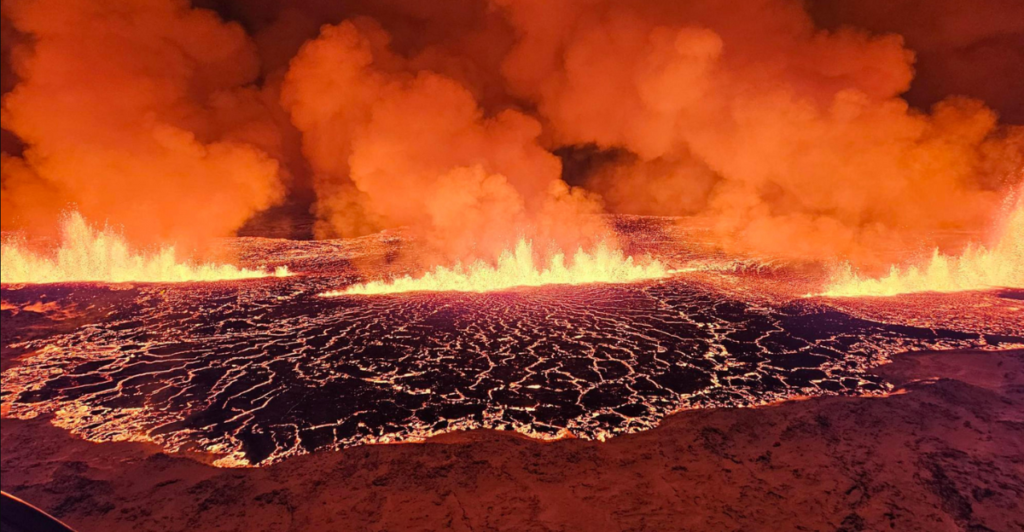
Iceland’s volcanic eruption severely impacted its marine ecosystems. Sulfur dioxide emissions mix with water vapor in the air to create acid rain, lowering pH levels in surrounding oceans. This chemical alteration threatens plankton—the foundation of oceanic food chains—and fish populations vital to wildlife and fisheries.
Lava entry into coastal waters raises temperatures drastically, killing coral reefs and displacing cold-water ecosystem-dependent organisms. Toxic runoff from ash deposits also pollutes bodies of water, endangering seals and other marine mammals.
As a result, scientists reasonably predict cascading effects across ecosystems as disturbances radiate outward from the eruption site.
Terrestrial Mammals Face New Trials
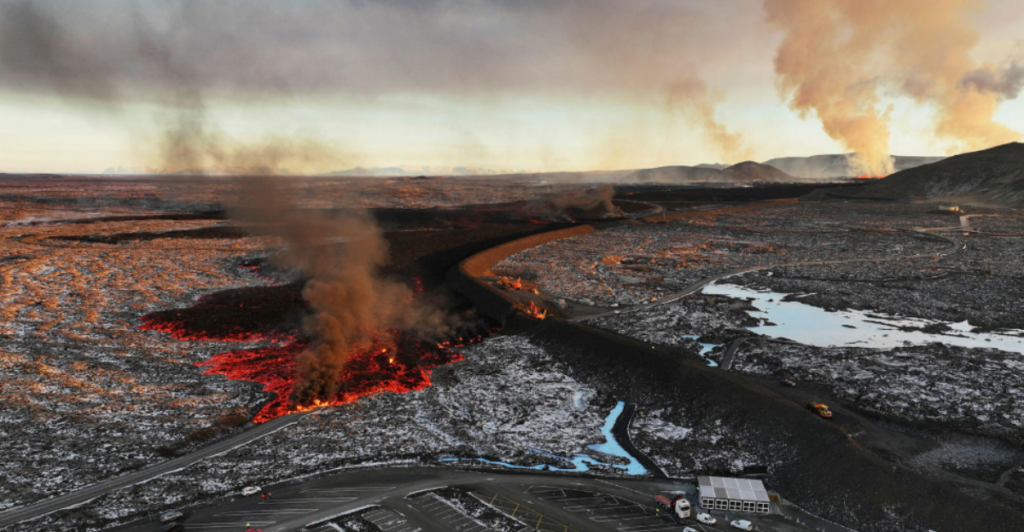
Iceland’s land mammals, including reindeer and Arctic foxes, are struggling to adapt to the changing landscape as the volcano continues to erupt. Lava flows destroy plant life essential to grazing mammals such as reindeer, and ash-covered ground makes it increasingly difficult for smaller mammals, such as foxes, to scavenge for food.
Prolonged exposure to noxious gases released during eruptions also leads to respiratory issues in wildlife. Further, as human communities are displaced, we begin to inadvertently encroach on animal habitats when seeking shelter from danger zones.
Conservationists are trying to relocate vulnerable species to protect them but face logistical challenges due to ongoing seismic uncertainty. However, technology has proven helpful. Using thermal-imaging drones, we can monitor animal movement and detect distress, enabling timely intervention, while satellite images analyze habitat change over time, guiding conservation planning.
Freshwater Systems Contaminated
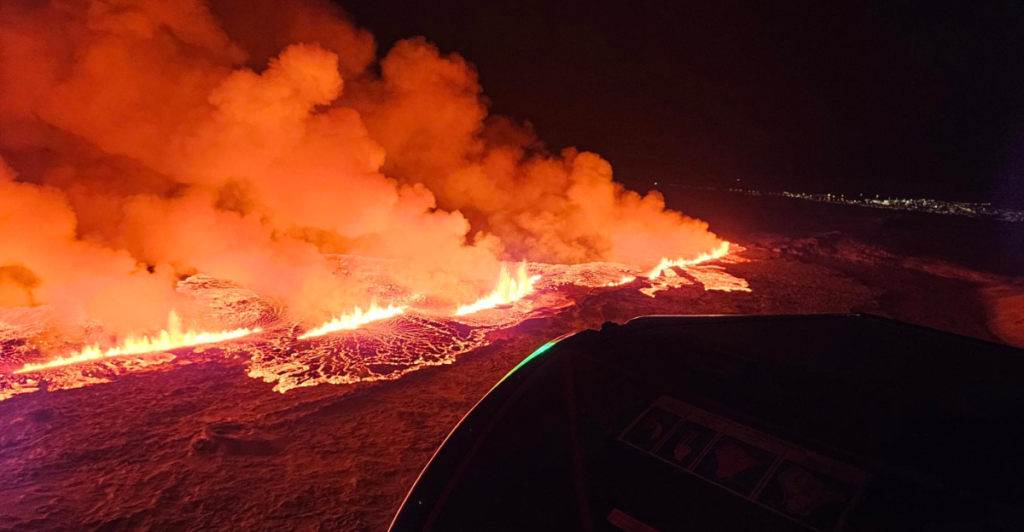
The eruption has also ravaged Iceland’s freshwater ecosystems through ash deposits and acid rain contamination. Rivers near Grindavík now have a higher sulfuric acid content, which is harmful to aquatic life, such as trout and salmon, that require clean water conditions to live, and the hunting processes of birds such as puffins and guillemots.
Volcanic debris blocks streams, interfering with water flow patterns critical for ecosystem stability. These blocks can prevent species from migrating and finding suitable breeding spots and threaten the survival of juvenile animals.
Wetlands—which host several bird species—are drying up due to the heat emanating from nearby lava fields. Freshwater disruptions trigger a chain reaction, affecting biodiversity and challenging ecosystems’ recovery from contamination.
Conservation Efforts Amid Crisis

With continuous eruptions since 2023, ecosystems are forced to face successive cycles of destruction and slow, disrupted recovery. Species that are unable to adapt quickly face extinction as habitats are rendered inhospitable from lava or chemical contamination.
Future eruptions are unpredictable, further complicating conservation strategies to protect wildlife from long-term harm. Thus far, Icelandic authorities, in collaboration with international universities, have stepped up conservation activities to protect wildlife using technologies such as thermal-imaging drones and satellite imagery.
Emergency tracking systems monitor air quality and habitat change in real-time while scientists study ways to neutralize acid rain on freshwater ecosystems. Relocation programs aim to move vulnerable species from danger zones.
Learning From the Past and Present

Iceland’s volcanic history speaks to the region’s ecological vulnerability and resilience. Heimaey’s 1973 eruption severely destroyed habitats but illustrated nature’s ability to recover over time. The 2010 Eyjafjallajökull eruption, however, showed how ash clouds negatively disrupted not only ecosystems but also air travel.
These events strengthen the argument for monitoring and curbing volcanoes’ impact on human and animal populations. Iceland’s preemptive interventions, such as species relocation and habitat monitoring, are an example of how to balance environmental protection with human safety during natural catastrophes.
As volcanic activity is set to increase worldwide due to tectonic realignments and climate change interactions, nations need to develop strategies to safeguard both human communities and natural ecosystems.
Preparing for the Future

Given the continuing volcanic eruptions, preparatory measures are a top priority. Creating habitat corridors may allow species migration from danger zones, while education programs emphasizing the impact of eruptions on ecosystems can encourage the public to participate in conservation efforts.
It is important to note, though, that the recent eruption near Grindavík is a clear reminder of Iceland’s unstable geology and how it affects both wildlife and human societies. Human safety is given priority in the short term, but the wider ecological effects also need to be considered.
Iceland can better manage the difficulties presented by its changing landscape by studying past eruptions, incorporating technology, and implementing proactive conservation measures. This would protect its citizens and the abundant biodiversity that characterizes the region.
Explore more of our trending stories and hit Follow to keep them coming to your feed!

Don’t miss out on more stories like this! Hit the Follow button at the top of this article to stay updated with the latest news. Share your thoughts in the comments—we’d love to hear from you!







